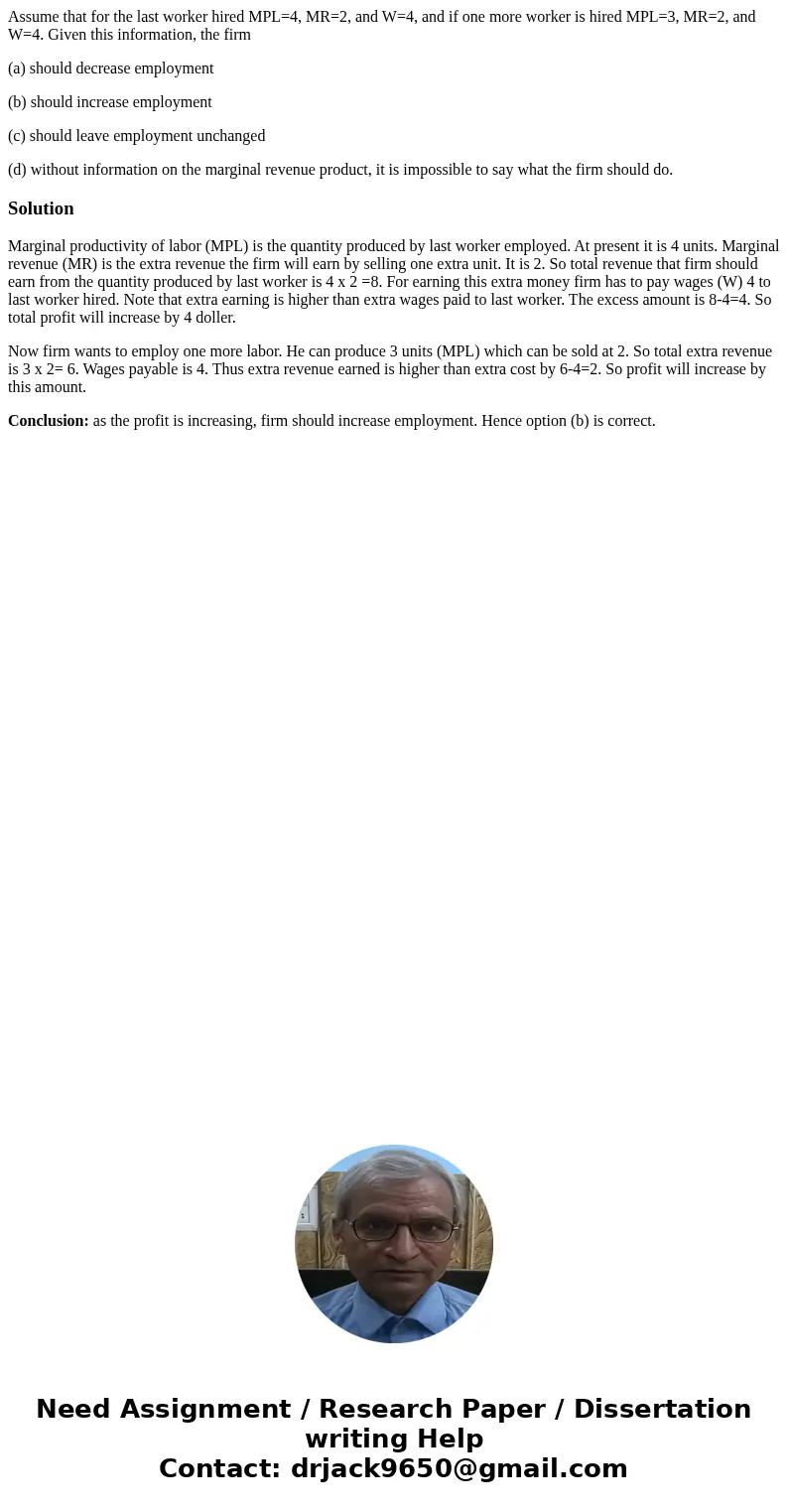Assume that for the last worker hired MPL4 MR2 and W4 and if
Assume that for the last worker hired MPL=4, MR=2, and W=4, and if one more worker is hired MPL=3, MR=2, and W=4. Given this information, the firm
(a) should decrease employment
(b) should increase employment
(c) should leave employment unchanged
(d) without information on the marginal revenue product, it is impossible to say what the firm should do.
Solution
Marginal productivity of labor (MPL) is the quantity produced by last worker employed. At present it is 4 units. Marginal revenue (MR) is the extra revenue the firm will earn by selling one extra unit. It is 2. So total revenue that firm should earn from the quantity produced by last worker is 4 x 2 =8. For earning this extra money firm has to pay wages (W) 4 to last worker hired. Note that extra earning is higher than extra wages paid to last worker. The excess amount is 8-4=4. So total profit will increase by 4 doller.
Now firm wants to employ one more labor. He can produce 3 units (MPL) which can be sold at 2. So total extra revenue is 3 x 2= 6. Wages payable is 4. Thus extra revenue earned is higher than extra cost by 6-4=2. So profit will increase by this amount.
Conclusion: as the profit is increasing, firm should increase employment. Hence option (b) is correct.

 Homework Sourse
Homework Sourse